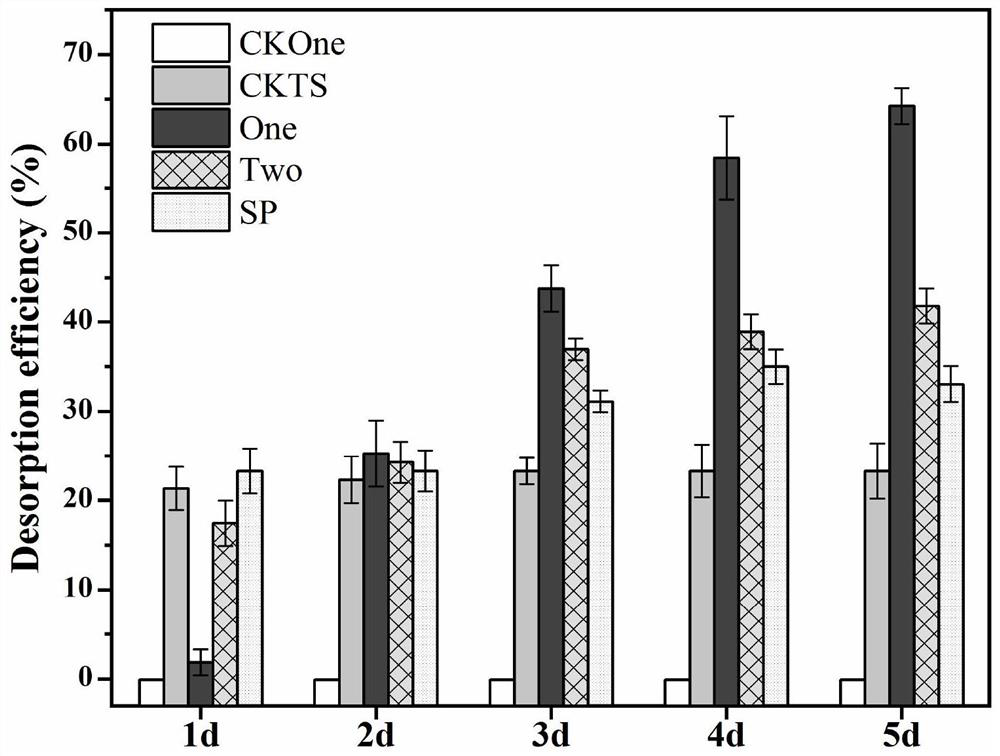Pseudomonas Z-12 and application thereof in removing heavy metal cadmium
A technology of Pseudomonas and Z-12, applied in the field of microbial treatment of heavy metals in soil, can solve the problems of unclear mechanism of action, difficult to analyze the mechanism of cadmium transformation, complex soil composition and structure, etc., to solve the problem of heavy metal cadmium pollution in soil, The effect of short cultivation period and low cost
- Summary
- Abstract
- Description
- Claims
- Application Information
AI Technical Summary
Problems solved by technology
Method used
Image
Examples
Embodiment 1
[0039] Example 1: Isolation, purification and identification of bacterial strain (Pseudomonas sp.) Z-12
[0040] Single bacteria isolation: The strain was isolated and purified from a soil sample collected from a heavily cadmium-contaminated paddy field in Xiangtan City, Hunan Province. The details are as follows: 100 mL of deionized water, 2 g of glucose, 0.2 g of yeast powder, 0.1 g of dipotassium hydrogen phosphate and 0.05 g of magnesium sulfate heptahydrate were added to a 250 mL Erlenmeyer flask, and sterilized at 115° C. for 30 minutes. Then add 5g of cadmium-contaminated soil sample, enrich and cultivate the microorganisms in the soil at 30°C and 180rpm; prepare 200mL of the above medium, add 2% (w / v) of agar powder and 0.005% (w / v) of bromine Cresyl blue indicator, sterilized at 115°C for 30 minutes, poured onto the plate, pipetted 100 microliters of microbial suspension onto the solid medium for coating, cultured at 30°C for 24 hours, selected yellow monobacteria for...
Embodiment 2
[0067] Embodiment 2: the optimization experiment of bacterial strain (Pseudomonas sp.) Z-12 growth condition
[0068] Determination of the optimum pH value for growth: Prepare the above-mentioned medium, divide it into 250mL Erlenmeyer flasks with 100mL each, set up 6 pH value gradients between pH 4.0 and 9.0, and repeat 3 times each, using hydrochloric acid and hydrogen oxidation The sodium solution adjusts the pH of the medium. After sterilizing at 115°C for 30 minutes, inoculate 1mL of bacterial solution, incubate at 30°C and 175rpm, take samples every 4 hours, and detect the OD value at a wavelength of 600nm with a microplate reader.
[0069] Determination of the optimum growth temperature: Prepare the above-mentioned culture medium, divide it into 250mL Erlenmeyer flasks by 100mL each, sterilize at 115°C for 30 minutes, inoculate 1mL of bacterial liquid, and inoculate them at 25°C, 30°C, and 35°C respectively. , 40°C, 45°C, and cultured at 175rpm, with 3 replicates for e...
Embodiment 3
[0075] Embodiment 3: Bacterial strain (Pseudomonas sp.) Z-12 is to cadmium polluted soil total cadmium and effective cadmium removal effect
[0076] The soil samples were all collected from a heavily cadmium-polluted paddy field in Xiangtan City, Hunan Province: take 0-15 cm of plow layer soil, remove plant residues, mix thoroughly, air-dry at room temperature, and grind through a 100-mesh sieve for later use. The experiment was carried out with a solid-liquid ratio of 1:10 (w / v), and an experimental group (Treatment) and a control group (CK) were set up in the experiment, and the bacterial concentration of the experimental group was 8×10 8 cells / mL of the bacterial solution, the control group was added deionized water with the same pH value (pH4.25) as the bacterial solution, and leached under the same conditions, with 3 replicates in each group.
[0077] Weigh 10g of the above soil sample into a 250mL Erlenmeyer flask, and sterilize it at 121°C for 15 minutes. After the samp...
PUM
 Login to View More
Login to View More Abstract
Description
Claims
Application Information
 Login to View More
Login to View More - Generate Ideas
- Intellectual Property
- Life Sciences
- Materials
- Tech Scout
- Unparalleled Data Quality
- Higher Quality Content
- 60% Fewer Hallucinations
Browse by: Latest US Patents, China's latest patents, Technical Efficacy Thesaurus, Application Domain, Technology Topic, Popular Technical Reports.
© 2025 PatSnap. All rights reserved.Legal|Privacy policy|Modern Slavery Act Transparency Statement|Sitemap|About US| Contact US: help@patsnap.com



